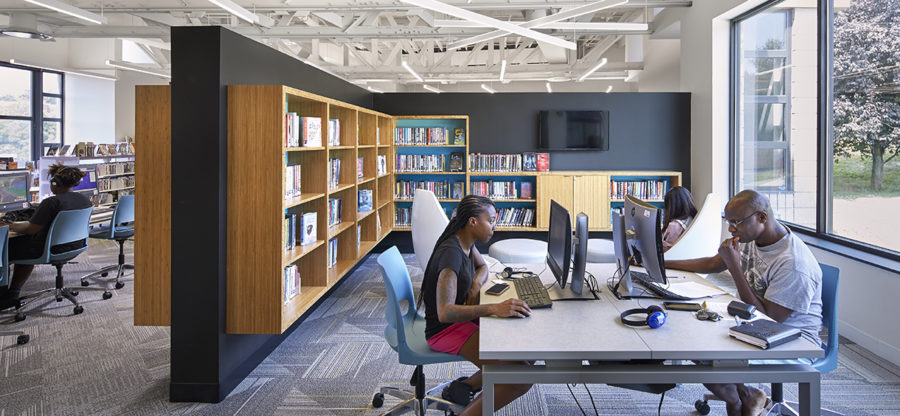Insights
Jan 14, 2020 _ insights
Information or Community Center: The Next Generation of Libraries Must Be Both
“It’s brand new, and it’s done for the community. The offerings are all there.” That’s how Nancy Musser, Adult Services Coordinator of the Baldwin Borough Public Library (BBPL) described the library’s new location as they prepared to move in a year ago. After being housed within three rooms of a former school building for 30 years, BBPL just got a new home in a renovated community center.
Some wonder whether it’s still worth dedicating resources to public libraries. Type “are libraries…” into the search engine of your choice, and your query will likely be autofilled with phrases like “…still relevant” or “…dying.” In an instant, your browser will return millions of hits—op-eds, insights, news articles, academic studies, and blog posts—from all over the world, all posing the question:
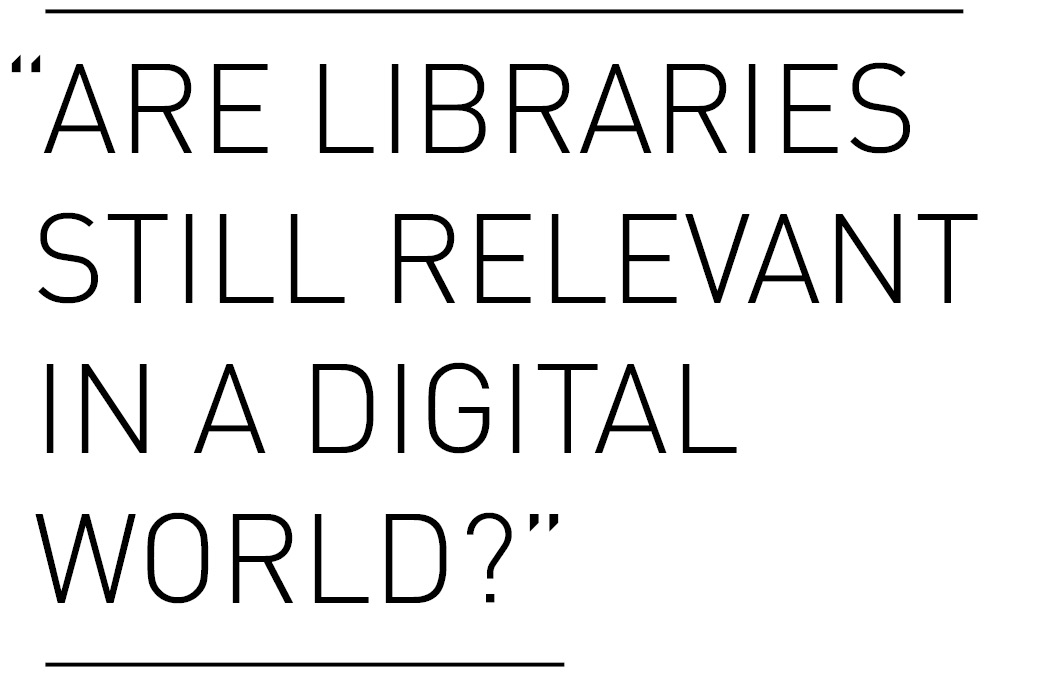
If the experience of BBPL is representative, the answer is an emphatic “yes.”
Four months after moving into the new space that GBBN designed for them, Jenny Worley, the director of BBPL shared the organization’s data on library use with us. It’s a testament to the ongoing vitality of community libraries – especially when they provide flexible, well-maintained, and welcoming spaces in walkable locations.
BBPL’s data shows that library use has increased dramatically with teens and children. Compared with the same stretch of the previous year, BBPL has seen a 61% increase in circulation of print materials – particularly graphic novels as more teens are coming to the library. Youth summer reading club participation is up 37%. Library workers have also noticed a lot more teens using the space as a safe place during the summer months.
And while it’s worth calling attention to the way the library serves its community’s youth, a lot more adults are coming in as well. This is reflected in the 93% increase in PC sessions (on the same number of computers), the 8% increase in program attendance, and 21% increase in overall attendance. Since moving into their new home, BBPL has registered 725 new library users – up from 176 over a typical nine-month period in their old location.
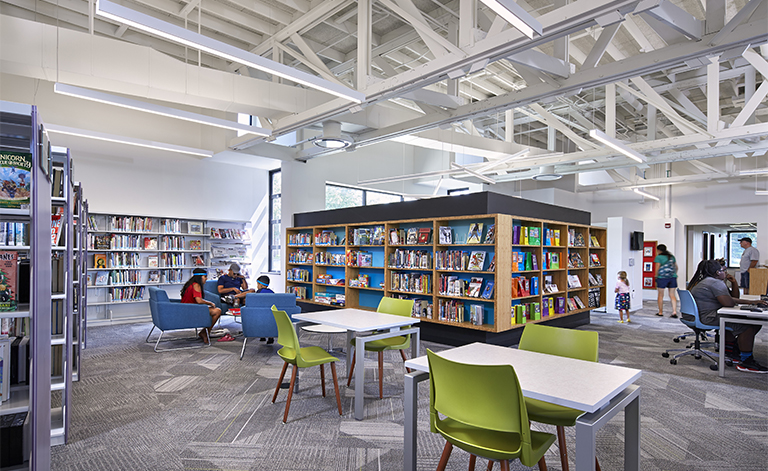
From distributing free summer lunches to kids to providing citizenship classes and ESL materials to local immigrants to loaning out helpful household items (sewing machines, projectors, etc.) to any who need them, BBPL’s space is being used in increasingly varied ways by an increasingly diverse range of community members.
GBBN anticipated this diversity of uses by designing a bright, inviting space where all would feel welcome. We kept the space open enough to allow parents to keep an eye on their children without having to be right next to them; created zones that were differentiated enough to give children, teens, and adults their own space; and designed the space to be flexible (with movable shelves and furniture), so it could be reconfigured to support larger group activities. While children, teens, and adults enjoy their own spaces, whole families come in to play BBPL’s boardgames or for movie nights. The new location also hosts weekly classes for immigrants and refugees, the local Bhutanese association uses it for community meetings, and the police have become regular visitors in order to foster a healthy relationship with local youth.
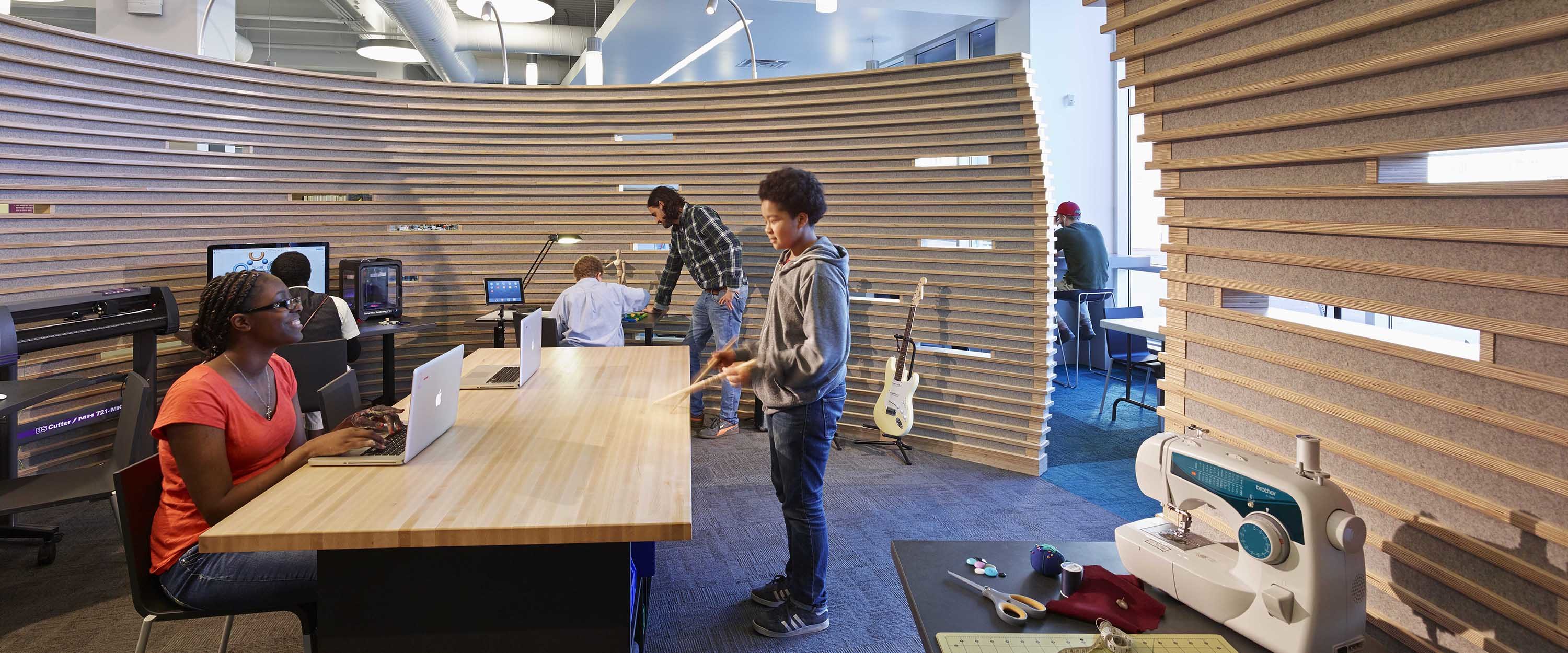
BBPL’s experience is not unique. When GBBN renovated and added on to the Carnegie Library of Pittsburgh (CLP) – East Liberty building, we created a new Teen Zone to provide a space for teens to work on a variety of multimedia and digital productions. This is now a place devoted to intense making, where learning happens through the creative process. After the renovation, the library saw a significant increase in use, including a 350% increase in attendance to teen programs and a 670% increase in overall teen attendance. More importantly, more teens get the time and space they need to just be themselves—even as they figure out what that means.
Likewise, when we renovated CLP – Knoxville we transformed it from a physically-imposing, Brutalist structure to a warm and inviting destination. Jennifer Pickle-Styran, Library Services Administrator, reported, “More people are coming, and they’re staying longer. They’re not just picking up a book or getting on a computer. It’s become more of a community center.”
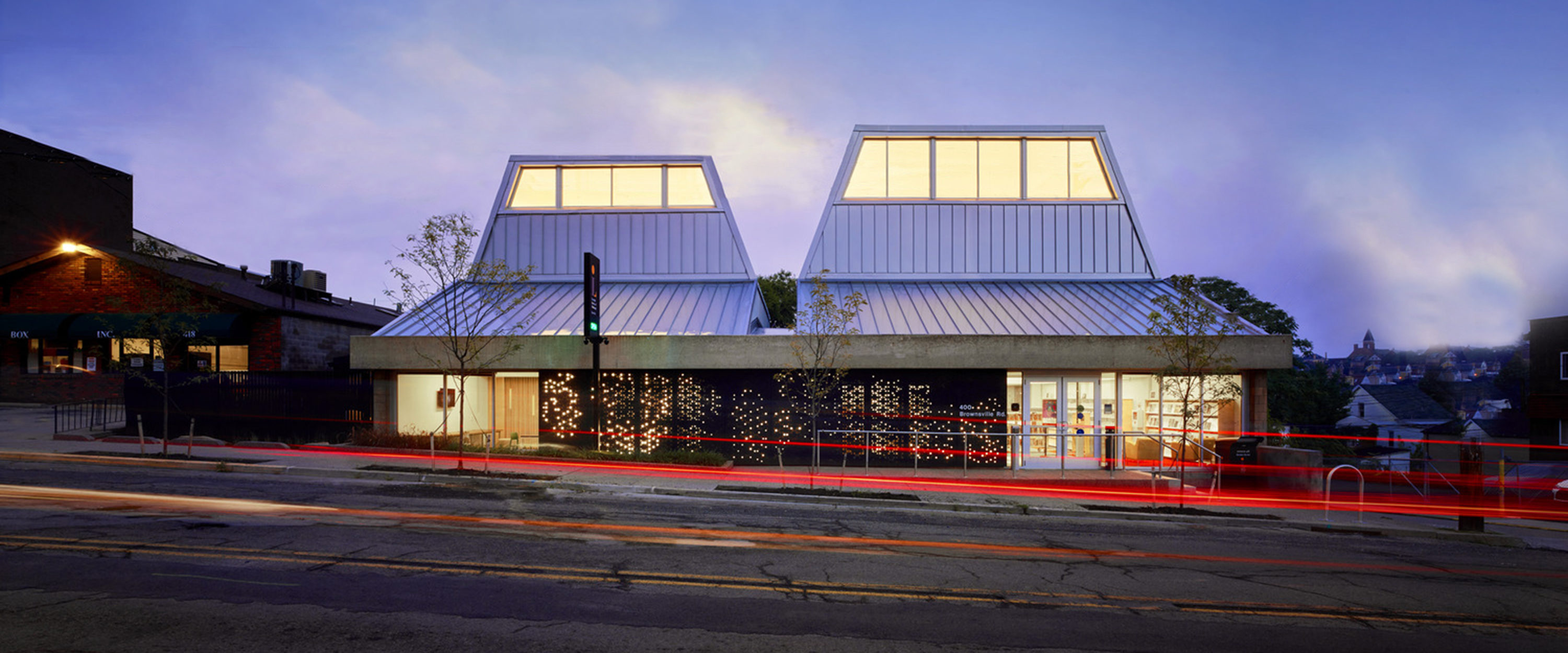
In many ways, it’s appropriate that the BBPL should find its new home in a renovated community center, because, in large part, that’s what a library is – an essential civic space. We’re in the habit of thinking of libraries as “information centers,” but the modern, American library was always more than that. When Andrew Carnegie dedicated the first Carnegie Library, he suggested as much. “When generation after generation shall have passed away,” Carnegie said, “this Library will remain and be recognized as a center of light and learning; a never-ending spring of all good influences.”
In a world where access to most places is monetized, libraries are free and public, and uniquely situated to tend to the community’s needs. Because of this, it’s important that architects and others working to design transformational library spaces, understand the community the library will serve and accommodate their needs while ensuring those spaces are welcoming and flexible enough to support the community as it changes.
More about Amanda:
Amanda Markovic is an associate principal at GBBN, co-founder of GBBN’s Design Issues Series (DIS), and a champion of the AIA Blueprint for Better Initiative. Her work includes award-winning projects for the Carnegie Library of Pittsburgh including the East Liberty Teen Hive and Knoxville renovation and the Maya Design Corporate Headquarters.
